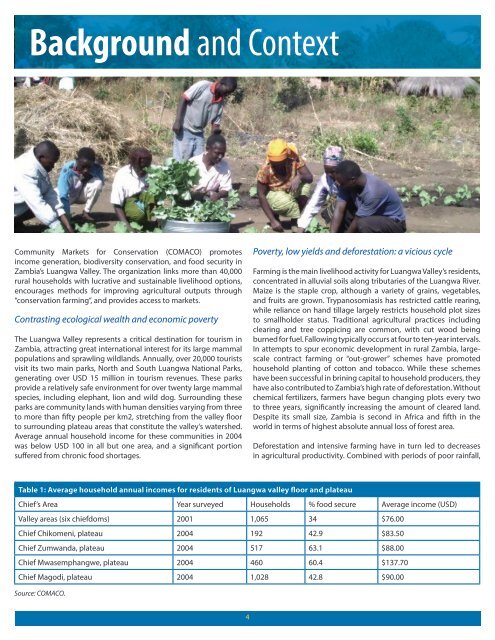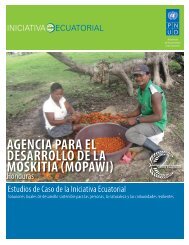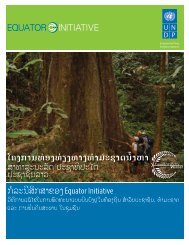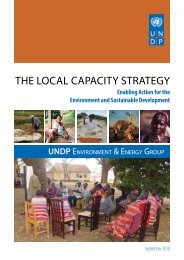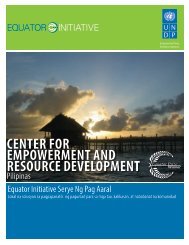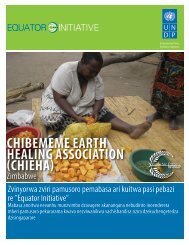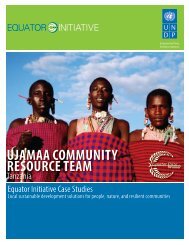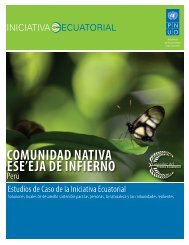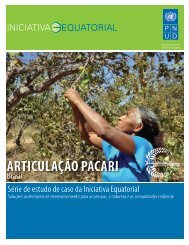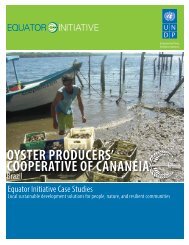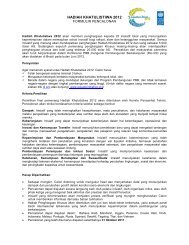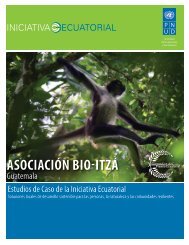Community Markets for Conservation - The GEF Small Grants ...
Community Markets for Conservation - The GEF Small Grants ...
Community Markets for Conservation - The GEF Small Grants ...
- No tags were found...
Create successful ePaper yourself
Turn your PDF publications into a flip-book with our unique Google optimized e-Paper software.
Background and Context<strong>Community</strong> <strong>Markets</strong> <strong>for</strong> <strong>Conservation</strong> (COMACO) promotesincome generation, biodiversity conservation, and food security inZambia’s Luangwa Valley. <strong>The</strong> organization links more than 40,000rural households with lucrative and sustainable livelihood options,encourages methods <strong>for</strong> improving agricultural outputs through“conservation farming”, and provides access to markets.Contrasting ecological wealth and economic poverty<strong>The</strong> Luangwa Valley represents a critical destination <strong>for</strong> tourism inZambia, attracting great international interest <strong>for</strong> its large mammalpopulations and sprawling wildlands. Annually, over 20,000 touristsvisit its two main parks, North and South Luangwa National Parks,generating over USD 15 million in tourism revenues. <strong>The</strong>se parksprovide a relatively safe environment <strong>for</strong> over twenty large mammalspecies, including elephant, lion and wild dog. Surrounding theseparks are community lands with human densities varying from threeto more than fifty people per km2, stretching from the valley floorto surrounding plateau areas that constitute the valley’s watershed.Average annual household income <strong>for</strong> these communities in 2004was below USD 100 in all but one area, and a significant portionsuffered from chronic food shortages.Poverty, low yields and de<strong>for</strong>estation: a vicious cycleFarming is the main livelihood activity <strong>for</strong> Luangwa Valley’s residents,concentrated in alluvial soils along tributaries of the Luangwa River.Maize is the staple crop, although a variety of grains, vegetables,and fruits are grown. Trypanosomiasis has restricted cattle rearing,while reliance on hand tillage largely restricts household plot sizesto smallholder status. Traditional agricultural practices includingclearing and tree coppicing are common, with cut wood beingburned <strong>for</strong> fuel. Fallowing typically occurs at four to ten-year intervals.In attempts to spur economic development in rural Zambia, largescalecontract farming or “out-grower” schemes have promotedhousehold planting of cotton and tobacco. While these schemeshave been successful in brining capital to household producers, theyhave also contributed to Zambia’s high rate of de<strong>for</strong>estation. Withoutchemical fertilizers, farmers have begun changing plots every twoto three years, significantly increasing the amount of cleared land.Despite its small size, Zambia is second in Africa and fifth in theworld in terms of highest absolute annual loss of <strong>for</strong>est area.De<strong>for</strong>estation and intensive farming have in turn led to decreasesin agricultural productivity. Combined with periods of poor rainfall,Table 1: Average household annual incomes <strong>for</strong> residents of Luangwa valley floor and plateauChief’s Area Year surveyed Households % food secure Average income (USD)Valley areas (six chiefdoms) 2001 1,065 34 $76.00Chief Chikomeni, plateau 2004 192 42.9 $83.50Chief Zumwanda, plateau 2004 517 63.1 $88.00Chief Mwasemphangwe, plateau 2004 460 60.4 $137.70Chief Magodi, plateau 2004 1,028 42.8 $90.00Source: COMACO.4


